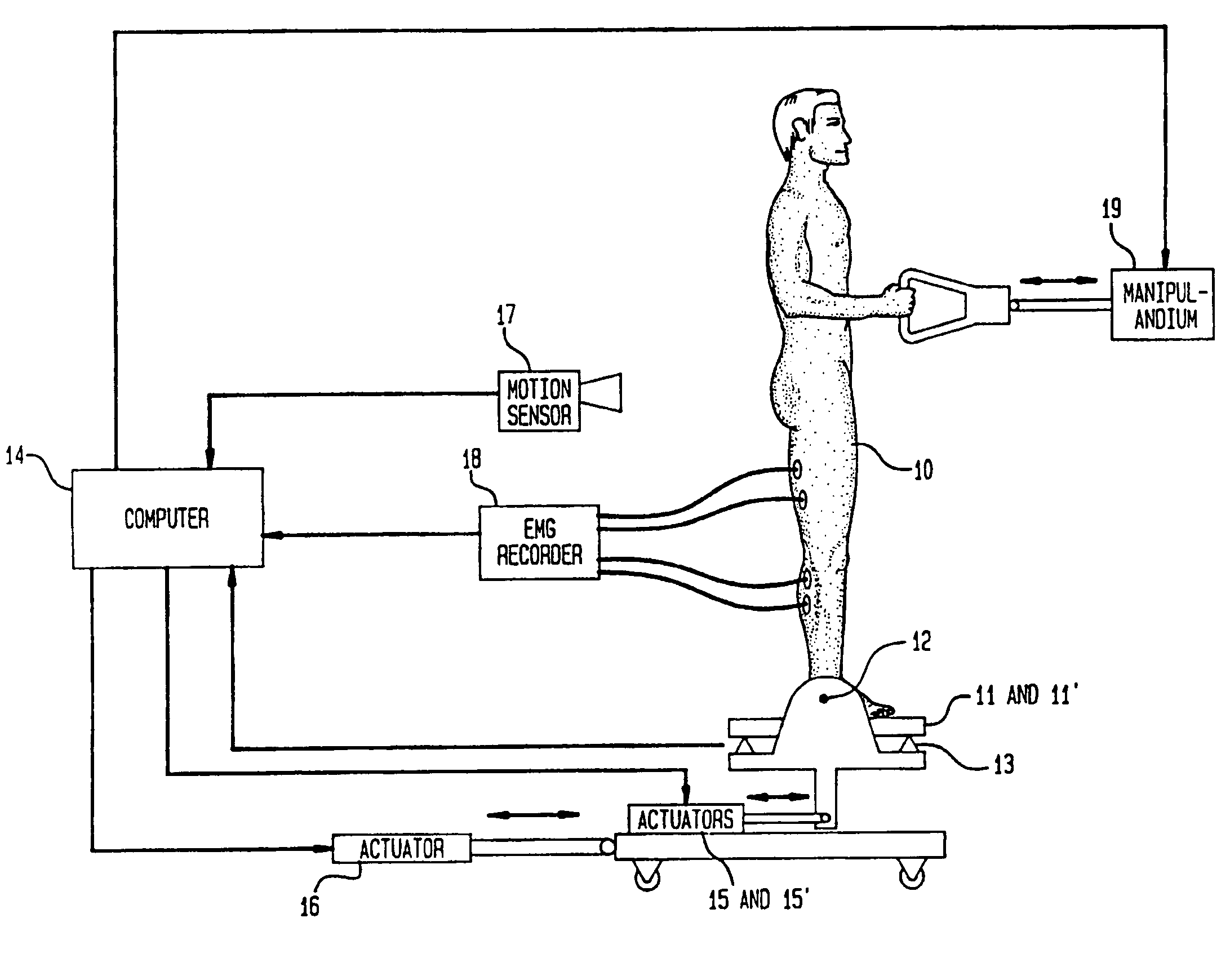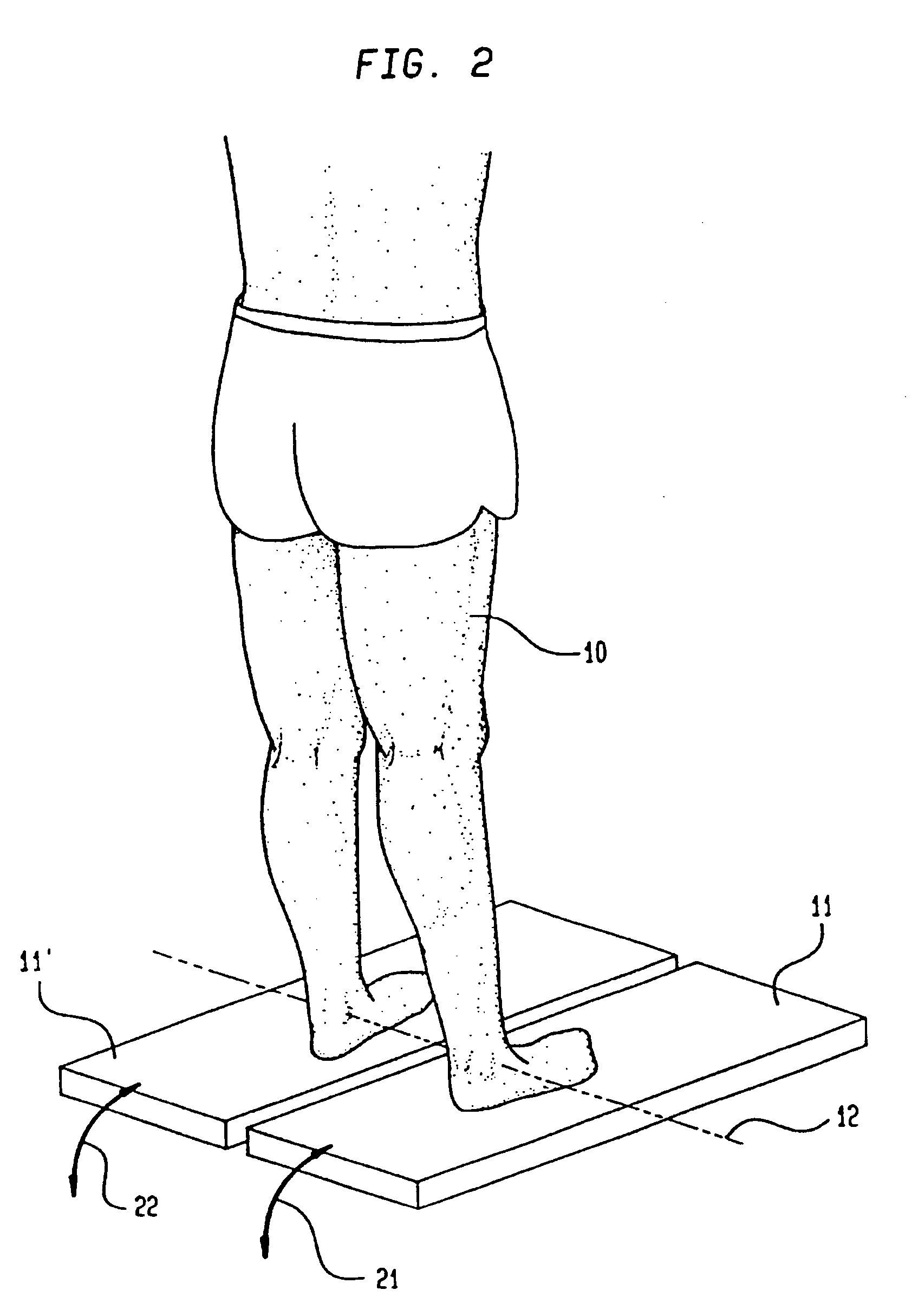Apparatus and method for movement coordination analysis
a technology of movement coordination and apparatus, applied in the field of apparatus and method for movement coordination analysis, can solve the problems of cerebral palsy, posture and movement control, and impair these motor functions, and achieve the effect of improving the accuracy and accuracy of the analysis results
- Summary
- Abstract
- Description
- Claims
- Application Information
AI Technical Summary
Benefits of technology
Problems solved by technology
Method used
Image
Examples
Embodiment Construction
[0029]Recent investigations describe platform systems which, in addition to measuring surface reaction forces, are movable by hydraulic or electric motor means to unexpectedly perturb a freely standing subject's position in equilibrium (Andres, 1982; Diener, et al, 1982; Diener, et al, 1984; Gurfinkel, et al, 1974; Ishida and Imal, 1980; Meyer and Blum, 1978; Nashner, 1970, 1971, 1974, 1976, and 1977; Nashner, et al, 1979; Nashner and Cordo, 1981). Nashner, et al, 1983 uses separate forceplates for each foot to show that the movements and muscle contractile patterns of patients with spastic hemiparesis in response to support surface perturbations were asymmetric. Using EMG's, they are also able to show that asymmetric forces exerted against the support surfaces are caused not by a lack of muscle contractile activity but by changes in the timing and distribution of contractile activity among leg muscles. Using two seesaws, each placed on a separate force measuring platform, Dietz and...
PUM
 Login to View More
Login to View More Abstract
Description
Claims
Application Information
 Login to View More
Login to View More - R&D
- Intellectual Property
- Life Sciences
- Materials
- Tech Scout
- Unparalleled Data Quality
- Higher Quality Content
- 60% Fewer Hallucinations
Browse by: Latest US Patents, China's latest patents, Technical Efficacy Thesaurus, Application Domain, Technology Topic, Popular Technical Reports.
© 2025 PatSnap. All rights reserved.Legal|Privacy policy|Modern Slavery Act Transparency Statement|Sitemap|About US| Contact US: help@patsnap.com



